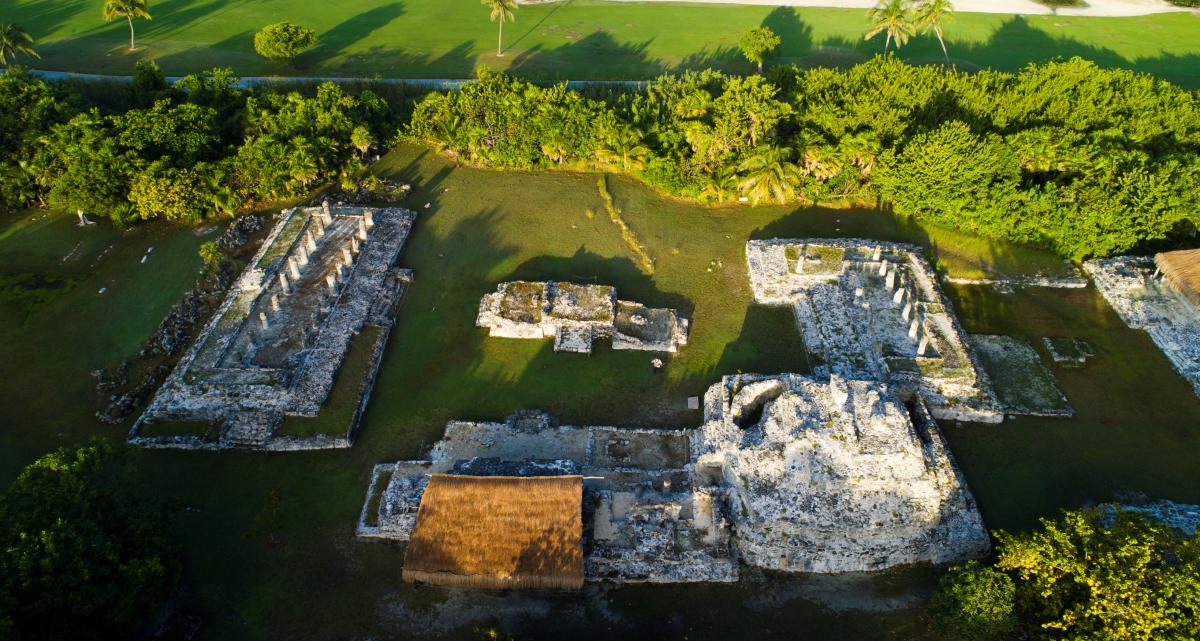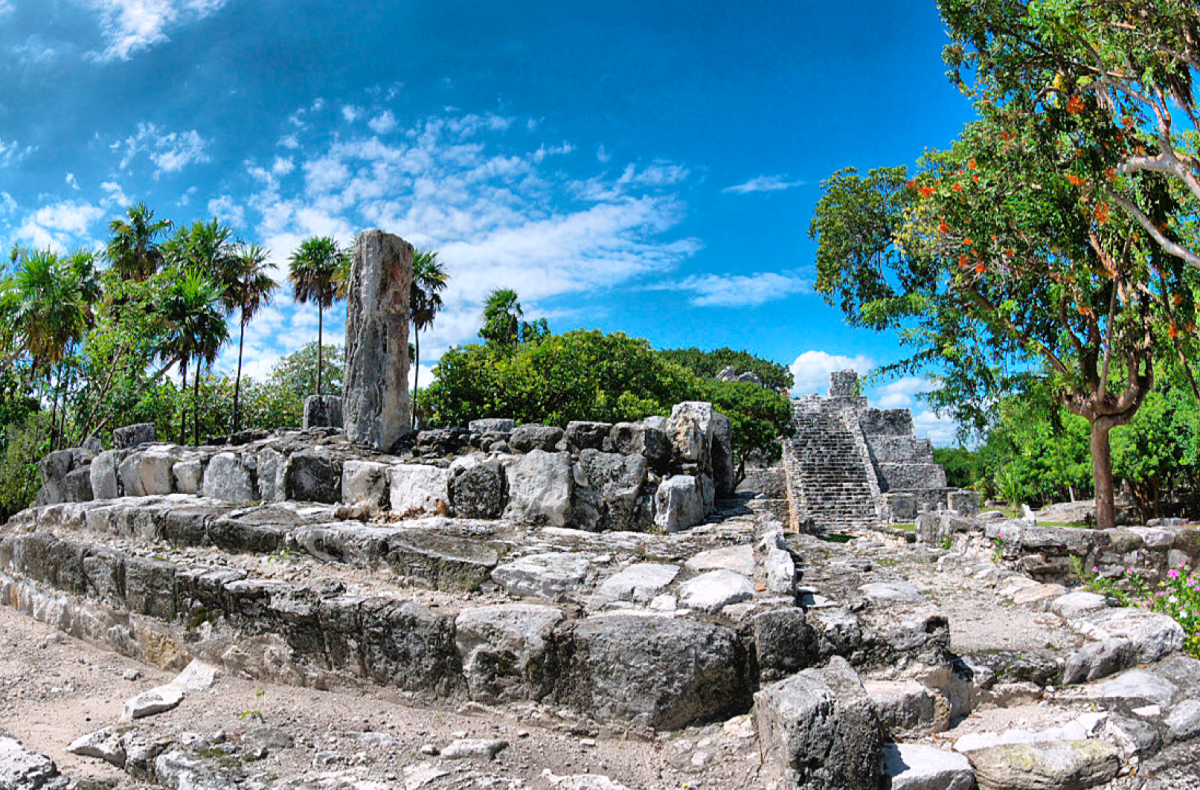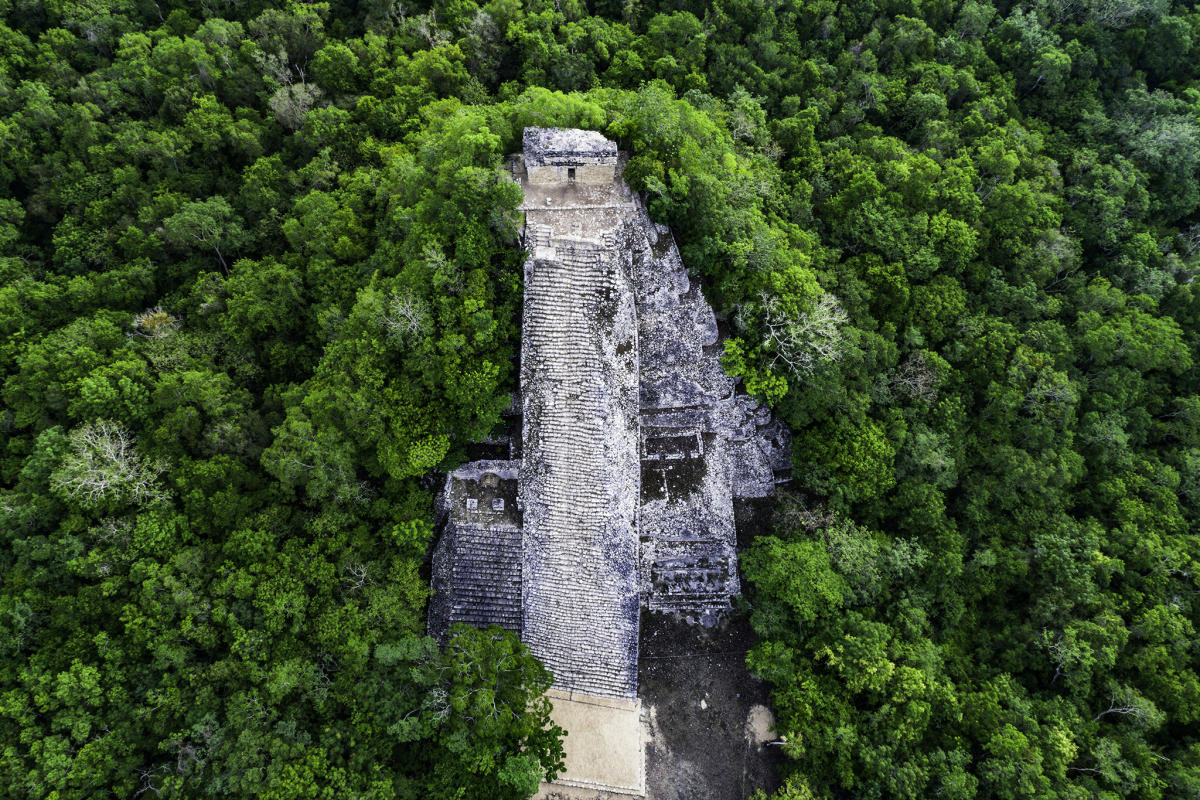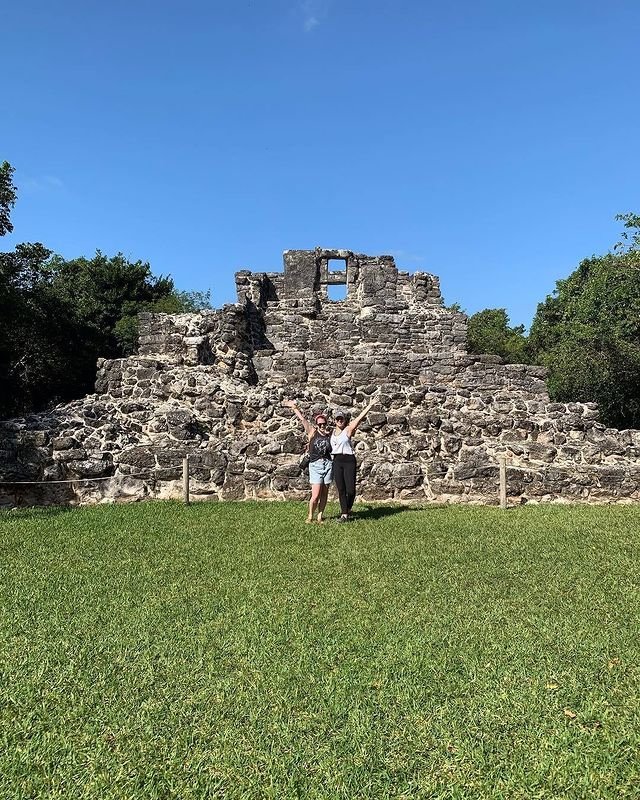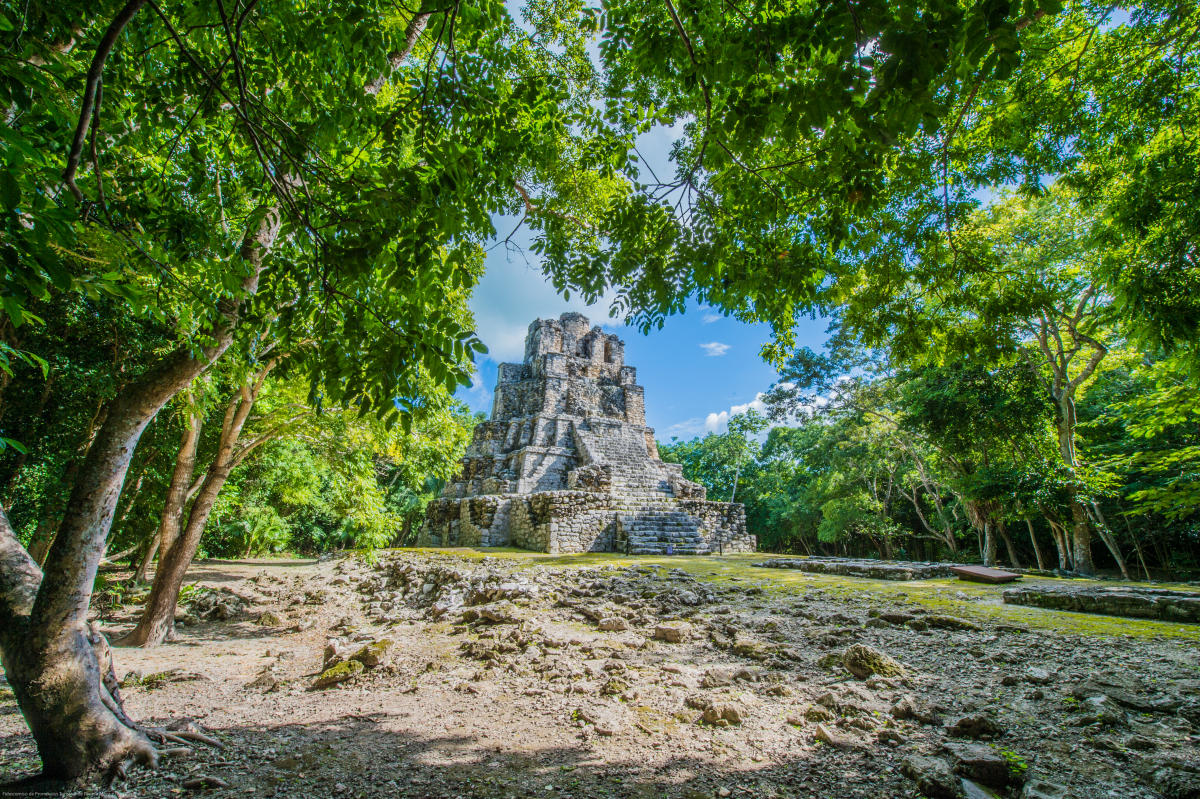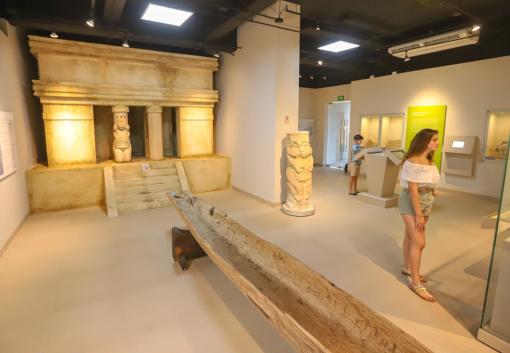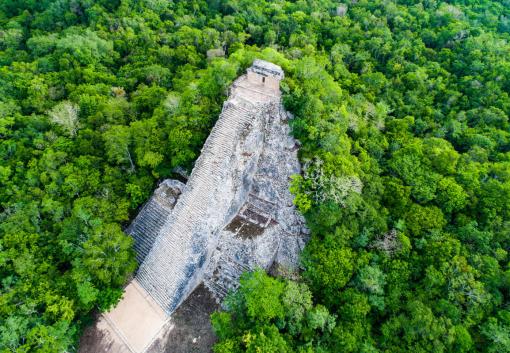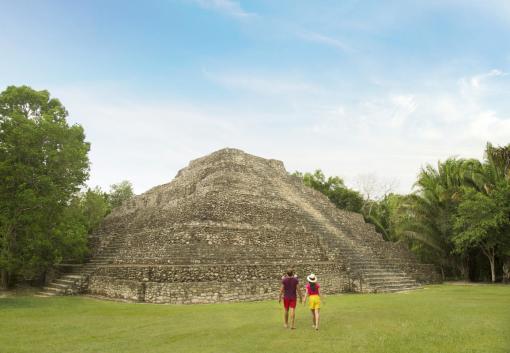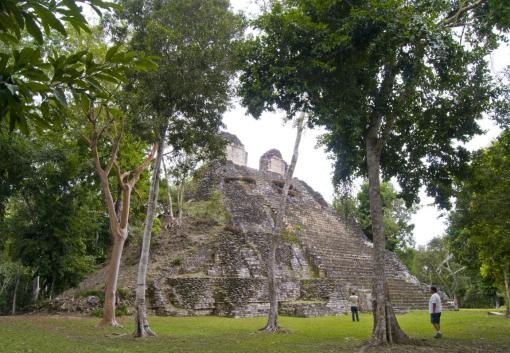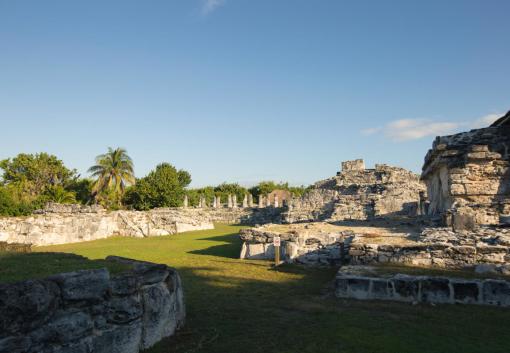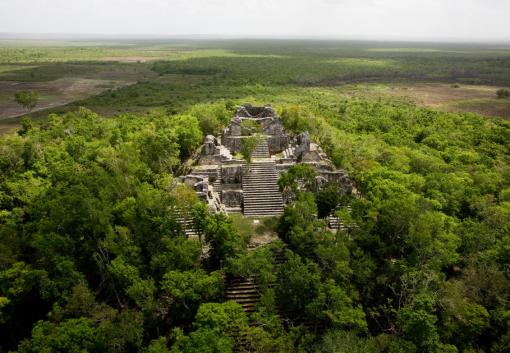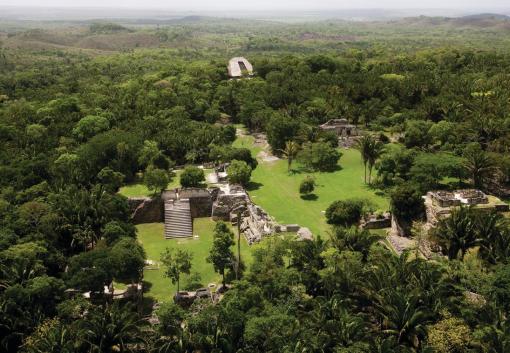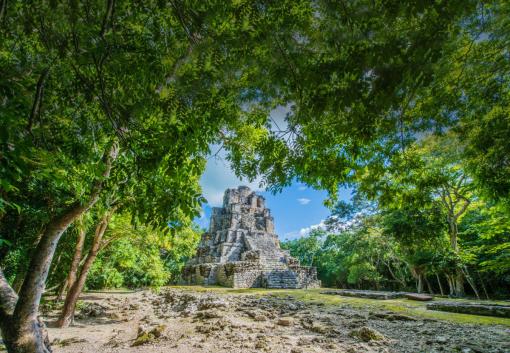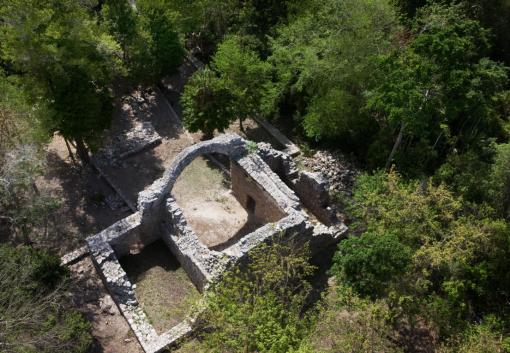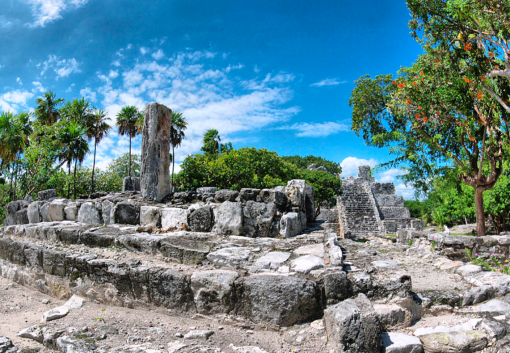Archaeological Sites
Among the many attractions that make the Mexican Caribbean a unique destination are its impressive archaeological sites, which allow us to travel back in time to learn about the history of the ancient Mayan culture. These areas represent an ancient people’s heritage and reminders of that which remains present today.
Quintana Roo is home to 19 archaeological sites and Mayan vestiges.
Cancun
This cosmopolitan city located north of Quintana Roo is home to three different archaeological sites which are part of the cityscape, including El Rey and San Miguelito, both located in the middle of the city’s hotel zone.
El Rey is the largest archaeological zone in Cancun and is only a few feet from Playa Delfines. San Miguelito is located next to the Maya Museum in Cancun. Its name, "San Miguelito," is due to the old copper ranch that was in operation in its place between 1950 and 1970.
North of Cancun, in the new tourist area known as Costa Mujeres, El Meco is an archaeological site just a few steps from the sea, which is why it played an important role in the Mayan navigation route as a small fishing village, believed to be connected to Cobá.
Riviera Maya
Stretching almost 75 miles, the Riviera Maya is home to several archaeological sites, including Tulum, the most visited archaeological site in the Mexican Caribbean and one of the most beautiful archaeological treasures in Mexico. This ancient Mayan city has more than 60 structures, including "El Castillo," which measures close to 25 feet. The site was the only one built on the shores of the Caribbean Sea.
Just 33 miles from Tulum, surrounded by tropical jungle, lies Cobá, one of the most incredible sites in Quintana Roo.
In its heyday, it extended over more than 20,000 square feet and had more than 50,000 inhabitants. Today, only 5% has been excavated, and it is estimated that there are about 6,500 structures in the area. The site is home to the Nohoch Mul pyramid, which is the tallest in the northern Yucatan Peninsula, at 105 feet high.
Other archaeological sites that you can explore when visiting the Riviera Maya are Calica, Xcaret, Xel Há and Xaman-Há, which are within the tourist complex of Playacar, a few steps from Fifth Avenue in Playa del Carmen.
Cozumel
Cozumel is an island rich in history and culture. Its foundation dates back to the 900s AD when it was an important port for the exchange and commercialization of various products such as coffee, corn, and jade, among others. In addition, it served as a center of worship frequented by Mayan women who made pilgrimages to the island to bring offerings and pray to the goddess Ixchel, the Mayan goddess of fertility, love, and the moon.
The most significant and largest site on the island is San Gervasio, a city that was founded around the year 300. The city reached its peak in the year 1000, with the rise of as the great political and economic center of the Yucatan Peninsula. This was when the city was integrated into a large economic network, which led it to become a great city starting in 1200 AD.
Maya Ka'an
Located 20 minutes south of Tulum, Maya Ka'an is a region that includes several Mayan communities, such as Muyil, where the archaeological site of the same name is located. This is one of the oldest Mayan cities in the region. The Muyil Archaeological Site lives within the Sian Ka'an Biosphere Reserve, housing fascinating buildings among the dense vegetation, where the 55-feet-high pyramid known as "El Castillo" stands out.
Grand Costa Maya
To the south of Quintana Roo is the Grand Costa Maya, a region with five archaeological sites: Chacchobén, Kohunlich, Oxtankah, Dzibanché, and Kinichná.
All the sites in the south have a unique architectural beauty; however, Oxtankah stands out because, in addition to its Mayan structures, it is home to the remains of a Spanish chapel that is believed to have been built by the conqueror Alonso de Ávila in 1531.
- Sort By:
- Recommended
- Near Me
Cozumel Island Museum
- Av. Rafael E. Melgar #321 Entre Calles 6 Nte y 4Nte
Cobá Archaeological Site
- Carretera Federal Tulum 307, 77793 Cobá, Q.R.
Chacchobén Archaeological Site
- 77926 Chacchoben, Q.R.
Dzibanché Archaeological Site
- Othón P. Blanco, Quintana Roo
El Rey Archaeological Site
- Boulevard Kukulcán, 77500 Cancún, Q.R.
Kinichná Archaeological Site
- Kinichná, Q.R.
Kohunlich Archaeological Site
- Carretera Federal 186 (Chetumal-Escárcega, 77981 Chetumal, Q.R.
Muyil Archaeological Site
- Reforma Agraria-Puerto Juárez km 25, Chunyaxche, 77710 Felipe Carrillo Puerto, Q.R.
Oxtankah Archaeological Site
- Chetumal, Q.R.
San Gervasio Archaeological Site
- Carretera Transversal Km. 7
El Meco Archaeological Site
- Carretera Puerto Juarez, López Portillo, 77520 Cancún, Q.R.
San Miguelito Archaeological Site
- Blvd. Kukulcan LT 52-04, Zona Hotelera, 77500 Cancún, Q.R.
More To Explore

